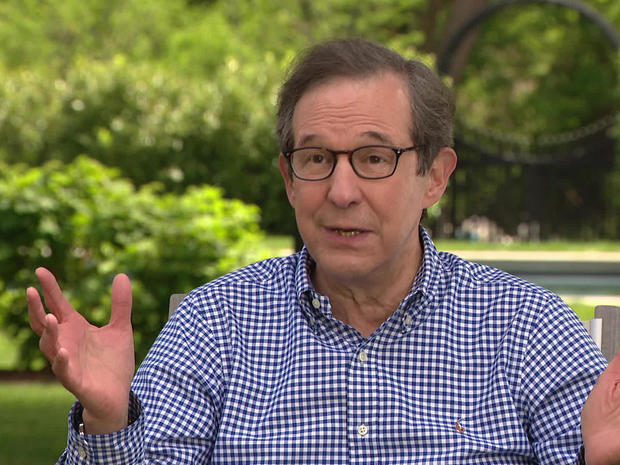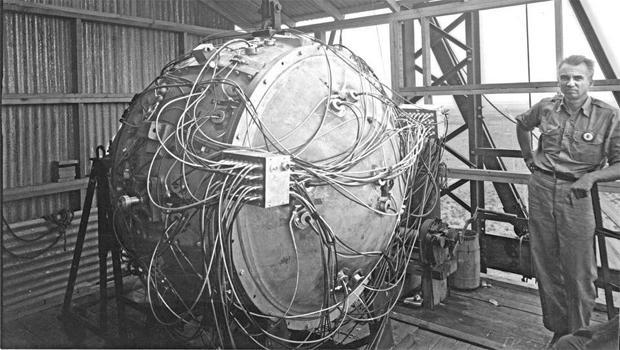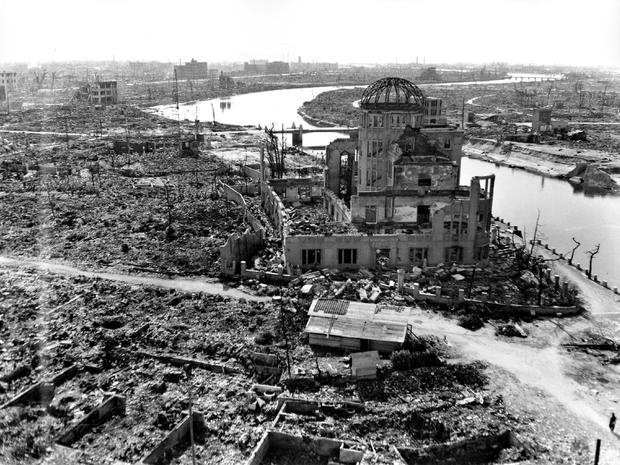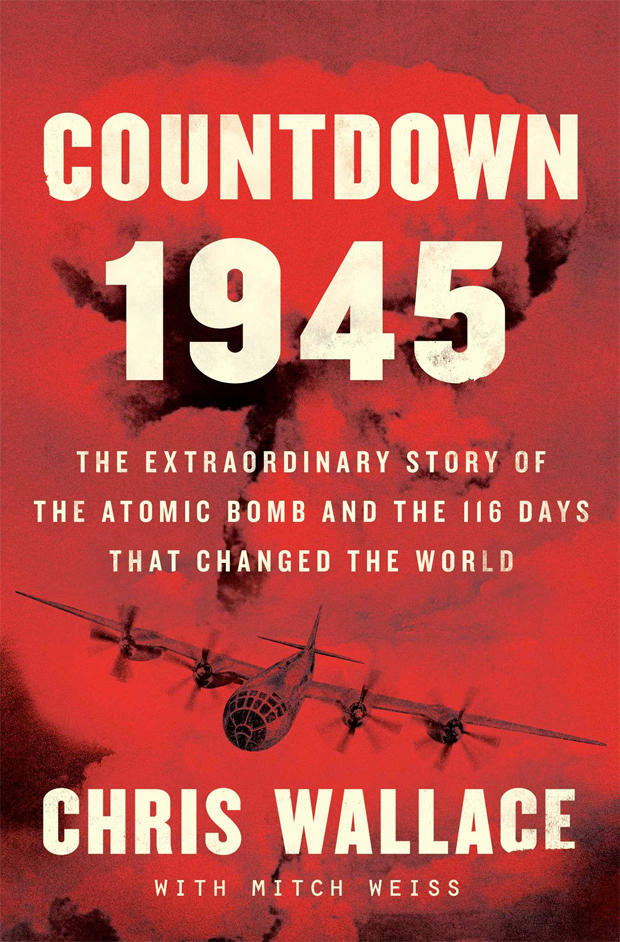As the anchor of “Fox News Sunday,” Chris Wallace has been at the center of the cultural and political wars swirling around President Trump. So, his new book seems to come out of nowhere. “One of the things I love the most about researching this book and writing this book is it has nothing to do with Donald Trump,” Wallace said.
“Countdown 1945,” published by Simon & Schuster (a ViacomCBS company), tells the dramatic story of the 116 days from Harry Truman’s sudden and unexpected swearing-in as president to the dropping of the atomic bomb on Hiroshima.
“It was the biggest decision maybe any president has ever made,” Wallace said.
Vice President Truman had been presiding over a dreary Senate debate when he was called to the White House: “Eleanor Roosevelt is dressed in black, and she says, ‘Harry, the president is dead.’ And he says, ‘Mrs. Roosevelt, is there anything we can do for you?’ And Eleanor Roosevelt says, ‘Harry, is there anything we can do for you? Because you’re the one in trouble now.'”
Truman and the cabinet looked stunned at his swearing-in. “I felt like the moon, the stars and all the planets had fallen on me,” he said. Then, Secretary of War Henry Stimson pulled him aside, to inform him of “a top-secret project of immense importance” to create the most powerful bomb ever built.
Truman had been vice president for only three months, and knew nothing about the Manhattan Project and the race to build the atomic bomb.
“This is the original weapon of mass destruction,” said national security correspondent David Martin.
“Absolutely,” Wallace said. “The world had never seen anything like this.”
The military was busy planning the invasion of Japan, an operation Gen. George Marshall estimated would require 700,000 troops, take a year, and cost tens of thousands of American casualties. The bomb had not yet been tested.
Wallace said, “Truman had no idea whether it was going to work, and he basically said, ‘It’s a science project until you can convince me that this is actually a weapon,’ which doesn’t happen until July 16.”
On that morning at Alamogordo, New Mexico, the scientists who had designed and built what they called “the gadget” were ready.
“At 5:30, this pulse goes to the bomb, which is up on a 100-foot tower,” Wallace said. “And something happens that has never happened in the history of the world before.”
This is what it looked like:
“This enormous mushroom cloud billows 40,000 feet into the air,” said Wallace. “The 100-foot steel tower is vaporized. And every living thing, from antelope to blades of grass, were vaporized.”
President Truman was in Potsdam, Germany, for his first meeting with Winston Churchill and Joseph Stalin.
“He now realizes this isn’t a science project anymore; he’s got the most powerful weapon ever imagined by man,” Wallace said.
“The president has at his disposal a weapon that can destroy a city,” said Martin. “Now you’ve got to choose a city. How was that done?”
“They wanted a major city that had largely been untouched, that had a military impact, and that had the topography that would augment and magnify the explosiveness of the bomb so it would have as dramatic a military and psychological impact as possible,” Wallace said. “And at the top of the list was Hiroshima.”
Was it a legitimate military target? “Absolutely. It was about 250,000 people, but there were about 50,000 troops garrisoned there, so it was a legitimate target.”
“Surely they realized women and children would not be spared?” Martin asked.
“He basically made the calculation: ‘If we go and invade, we’re going to kill a lot of Japanese civilians, and we’re also going to kill a lot of Americans. Or, we can drop the bomb and just kill the Japanese. It sounds cold-blooded, but that was the calculation.”
The bomb weighed 9,000 pounds and was hoisted into the belly of a B-29 flown by Col. Paul Tibbets, who named the plane for his mother, Enola Gay. It took off in the early morning of August 6, 1945, from the island of Tinian, in the northern Marianas. The bomb fell from 30,000 feet to 1,800 feet before detonating.
The co-pilot, Robert Lewis, jotted down perhaps the most succinct and apt description of the moment: “My God, what have we done?”
President Truman was aboard a ship returning from the Potsdam conference when he announced the destruction of Hiroshima: “We are now prepared to destroy more rapidly and completely every productive enterprise the Japanese have in any city,” he said.
“He was jubilant about it because he thought, ‘Now finally maybe we can end the war and we can save hundreds of thousands of American lives,'” Wallace said.
All that was left standing in Hiroshima were structures built of concrete, and they had been gutted by fire. But the city was off-limits to reporters, until a young correspondent named John Hersey broke through military censorship and wrote probably the most famous magazine article ever in The New Yorker: “Hiroshima” (published August 24, 1946).
Wallace said, “That is the first time that most Americans really found out in graphic detail what it was like to experience the bombing at Ground Zero.”
Wallace found out from Hideko Tamura, who was a 10-year-old girl in Hiroshima 75 years ago.
“She sees people incinerated,” he recalled. “She sees people who the thermal wind has sucked their eyes out. She sees bodies all over the place. She sees people who’ve been vaporized, and all that’s left is the shadow of where they were against a wall.”
Japan did not surrender until three days later, after a second, more powerful bomb (named Fat Man) was dropped on Nagasaki.
Mr. Truman at one point writes, “I think that the flower of American youth is worth a couple of Japanese cities.”
World War II, the most terrible in history, was over. Seventy-five years later, a stark truth remains,” Wallace said: “A nuclear weapon has been used in warfare only twice, three days apart, and the only country that’s ever used it was the United States.”
READ AN EXCERPT: “Countdown 1945”
For more info:
Story produced by Mary Walsh. Editor: Remington Korper.
See also:





